The WORK gallery is currently showing two of Krzysztof Wodiczko‘s works that invite the public to reconsider their understanding of the impact of war on veterans who have fought (or worked as medics) in Iraq and Afghanistan.
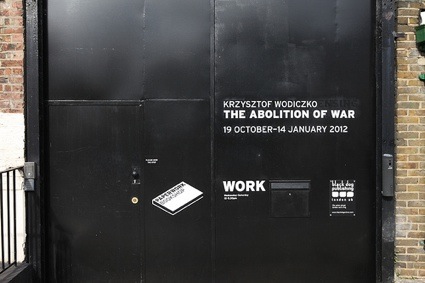 Krzysztof Wodiczko, War Veteran Vehicle (entrance to the exhibition.) Image courtesy of WORK gallery
Krzysztof Wodiczko, War Veteran Vehicle (entrance to the exhibition.) Image courtesy of WORK gallery
My admiration for Wodiczko’s work knows no boundaries so i was delighted to meet him in London for an interview while he was installing the show a few weeks ago.
Throughout his practice Wodiczko has explored social and political marginalisation, and the creation of suitable platforms for alienated and excluded communities to “develop their shattered abilities to communicate” and testify about their personal experiences.
The work that brought him to my attention a few years ago was the Homeless Vehicle. The vehicle is a powerful communication tool that answered the basic necessities (sleeping, washing, as well as collecting and reselling cans and bottles) of homeless people living in New York and gave them and passersby the opportunity to engage in a dialogue.
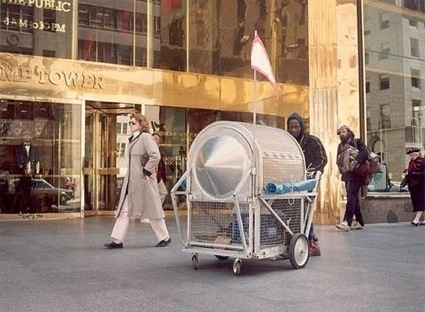 Krzysztof Wodiczko, Homeless Vehicles, 1988 – 1989
Krzysztof Wodiczko, Homeless Vehicles, 1988 – 1989
The London show is not about homeless people. At least not literally. The show is dedicated to war veterans and for Wodiczko, the veterans are homeless too. They might go back to a house after the war, they might have a roof over their head but it doesn’t feel like home anymore. They are traumatized to various degrees and feel like they’ve become strangers to the place where they used to live. They don’t function like they used to. They have been conditioned to be constantly on alert, to react on the spot to any unexpected light, move, noise, etc. It is difficult for them to turn off that aggressive instinct once they are back to civilian life.
Rates of suicide among Iraq and Afghanistan war veterans are extremely high, as is homelessness. Some veterans can’t communicate with their family anymore and go away, preferring to protect their family from the person they have become. Furthermore, they return to countries where most civilians are fiercely anti-war and express little sympathy for their plight. If you’re a physically wounded soldier, people might understand that you’ve gone through hardship. If all the damage is inside, then society -even if we have all heard of “post-traumatic stress disorder”- has no mean to see how much combat stress has hurt you.
Wodiczko’s project helps the veterans open up and bridge the gap that separates them from those who don’t know what war is.
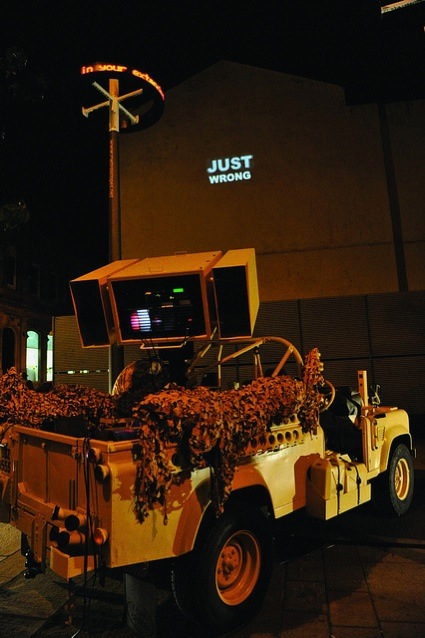 Krzysztof Wodiczko, War Veteran Vehicle, Liverpool, 2009. Photography courtesy Robert Ochshorn
Krzysztof Wodiczko, War Veteran Vehicle, Liverpool, 2009. Photography courtesy Robert Ochshorn
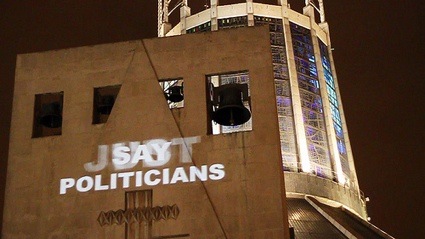 Krzysztof Wodiczko, War Veteran Vehicle, Liverpool, 2009. Photography courtesy Robert Ochshorn
Krzysztof Wodiczko, War Veteran Vehicle, Liverpool, 2009. Photography courtesy Robert Ochshorn
His War Veteran Vehicle is a ex-military vehicle complete with missile launcher converted into a mobile video projector with loudspeakers. Words, coming from interviews with homeless veterans were magnified and projected from the vehicle in buildings and monuments in Liverpool two years ago (a year before, a military Humvee had screened the words of American veterans on the facade of a homeless shelter and of the Denver Center for the Performing Arts during the Democratic National Convention.)
Watching the videos and listening to the testimonies of veterans is deeply moving. Some apologize to their son for having abandoned their family, others warn young men never to trust army recruiters, etc. They sound like people trapped in a never-ending nightmare.
The words are fired hard and sharp like projectiles, they are accompanied by the sound of cannon fire.
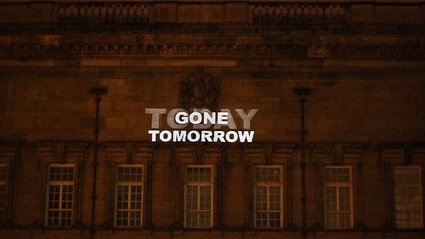 Krzysztof Wodiczko, War Veteran Vehicle, Liverpool, 2009. Photography courtesy Robert Ochshorn
Krzysztof Wodiczko, War Veteran Vehicle, Liverpool, 2009. Photography courtesy Robert Ochshorn
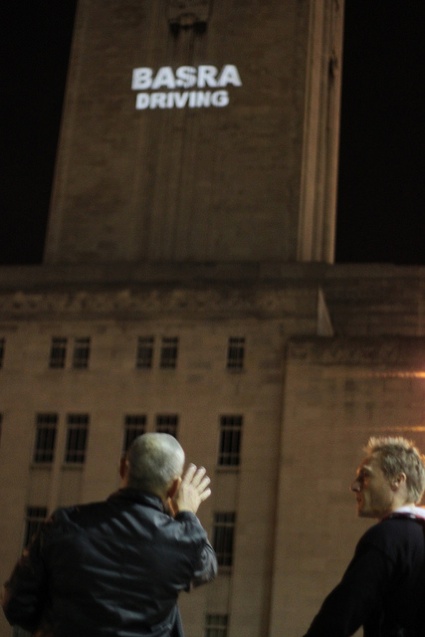 Krzysztof Wodiczko, War Veteran Vehicle, Liverpool, 2009. Photography courtesy Robert Ochshorn
Krzysztof Wodiczko, War Veteran Vehicle, Liverpool, 2009. Photography courtesy Robert Ochshorn
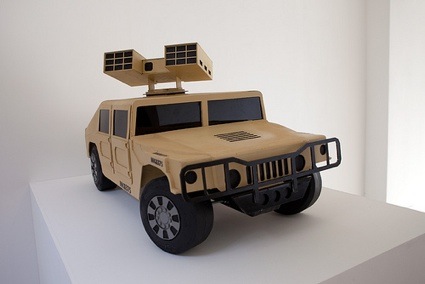 Krzysztof Wodiczko, model of the War Veteran Vehicle. Image courtesy of WORK gallery
Krzysztof Wodiczko, model of the War Veteran Vehicle. Image courtesy of WORK gallery
The War Veteran Vehicle is shown at WORK together with another of Wodiczko’s works, The Flame, which shows a candle flame moving to the voices of veterans sharing accounts of war in Iraq and Afghanistan an the impact it had on their life.
The title of the exhibition, The Abolition of War, takes its name from Wodiczko’s recent proposal to transform the Arc de Triomphe in Paris into the Arc de Triomphe–World Institute for the Abolition of War, thus reframing the traditional war monument as a site of education, critical discourse and proactive work towards peace.
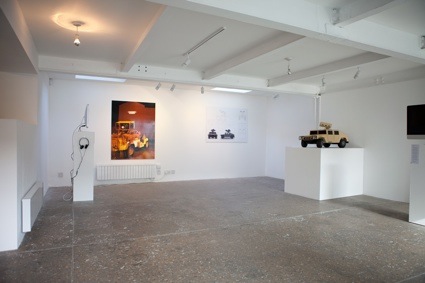 Krzysztof Wodiczko, War Veteran Vehicle (installation view.) Image courtesy of WORK gallery
Krzysztof Wodiczko, War Veteran Vehicle (installation view.) Image courtesy of WORK gallery
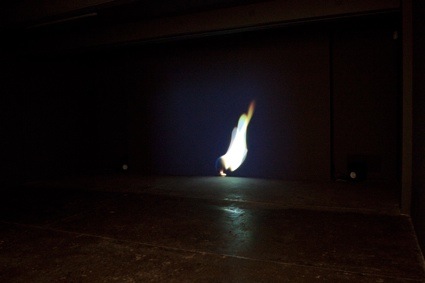 Krzysztof Wodiczko, The Flame, 2009. Installation view. Photo courtesy of WORK gallery
Krzysztof Wodiczko, The Flame, 2009. Installation view. Photo courtesy of WORK gallery
Previously: Book review – Krzysztof Wodiczko.
Krzysztof Wodiczko: The Abolition of War remains open at WORK gallery through 14 January 2012.
